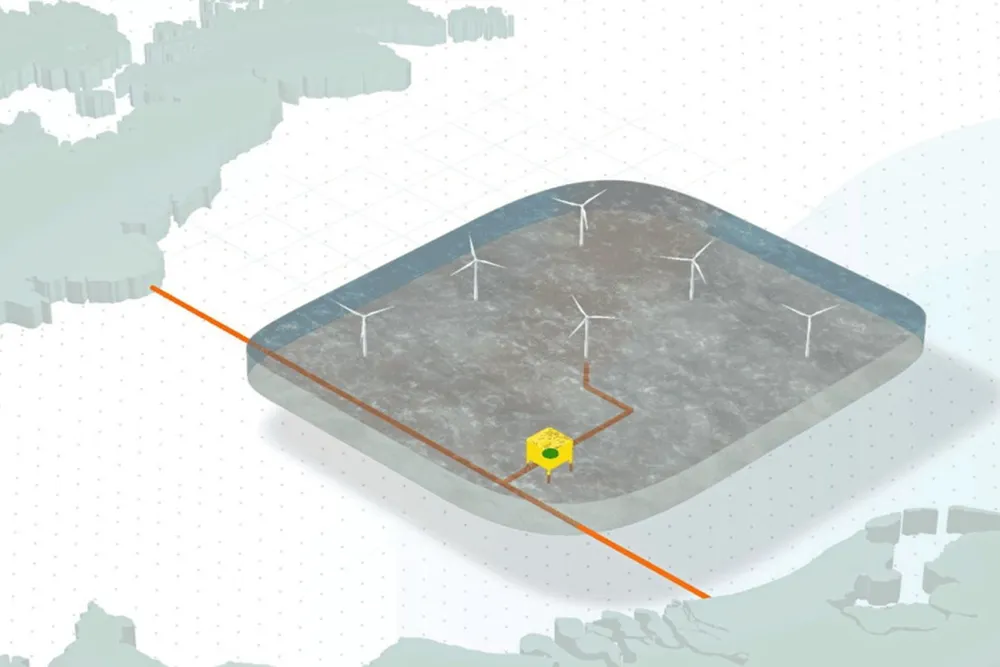Dutch green light for hybrid interconnector 'first step' toward integrated North Sea grid
Merging of offshore wind farms and interconnector infrastructure hailed as a breakthrough in Netherlands and UK

A rising tide of investment in North Sea grid infrastructure has received a further boost with Dutch approval of a hybrid interconnector that will link the Netherlands and UK grids via common offshore wind farm infrastructure.
Dutch climate and green growth Minister Sophie Hermans included a planned electricity interconnector between the Netherlands and the UK in the country’s latest Offshore Wind Energy Development Framework.
The interconnector, called LionLink, will be realised through the Nederwiek 3 offshore grid project and was described by Dutch transmission system operator TenneT as potentially the first ever direct-current hybrid interconnector.
This description is due to the fact that the offshore platform that will provide the grid connection TenneT is developing for the Nederwiek 3 wind farm will also include a cable to the UK, thereby serving the dual purpose of forming an interconnector.
Regular interconnectors connecting countries via a submarine cable have their own land station where power is converted from direct current to alternating current and to the appropriate voltage level of the country concerned.
“This project connects the Dutch offshore grid connection of wind farm Nederwiek 3 to both the Dutch and the UK onshore high-voltage grid. The connection can also be used as an additional high-voltage link to exchange electricity between the countries,” Tennet stated.
LionLink's partner National Grid Ventures is developing the connection from the maritime border in the North Sea to the onshore station in the UK.
Dutch government approval means TenneT can effectively start investing in LionLink, adding to its multi-billion dollar programme for modernising and expanding grid networks in the Netherlands and Germany.
“The hybrid interconnector between the Netherlands and the UK provides benefits for both countries, as it ensures improved security of supply, higher cable utilisation rates and efficient use of space in the North Sea,” stated Marco Kuijpers director of large projects (offshore) at TenneT.
‘In addition, this hybrid interconnector stimulates competition in the energy markets so that the affordability of electricity improves for both consumers and industry.”
Kuijpers added that National Grid Ventures, TenneT and the Dutch and UK governments will work together on the next steps to get the connection up and running in 2032.
These next steps include a Dutch government decision on the details of the market design for wind farm developers in the tender procedure for Nederwiek 3 and new arrangements on market coupling between the EU and the UK, Tennet stated.
TenneT's ongoing grid infrastructure investments include the Hollandse wind farm connections in the Netherlands and new long-distance HVDC offshore-onshore connections for Germany, such as the 2GW SuedLink and SuedOstLink project for the south of the country and the 2GW BalWin4 and LanWin1 connections.
The TSO has set out to deliver 12 offshore grid connection systems with a total capacity of 18.8GW by 2031.
In the UK, National Grid has said the LionLink project will connect the UK grid to an additional 1.5GW of potential capacity and described the shift toward "offshore hybrid assets" as a significant departure.
"LionLink will be the first step in the journey to a more interconnected North Sea grid," it stated on its website.
Hornsea 4
In a separate North Sea development, also on Monday, Hitachi Energy announced that it has received an order from Orsted to provide the power electronics technology needed to integrate 2.4GW of renewable energy from the Hornsea 4 offshore into the UK grid.
Hitachi Energy said its will supply an advanced grid-forming solution that uses the next generation of grid stabilisation technology — enhanced STATCOM — to manage grid frequency variations and system voltage at all times.
(Copyright)